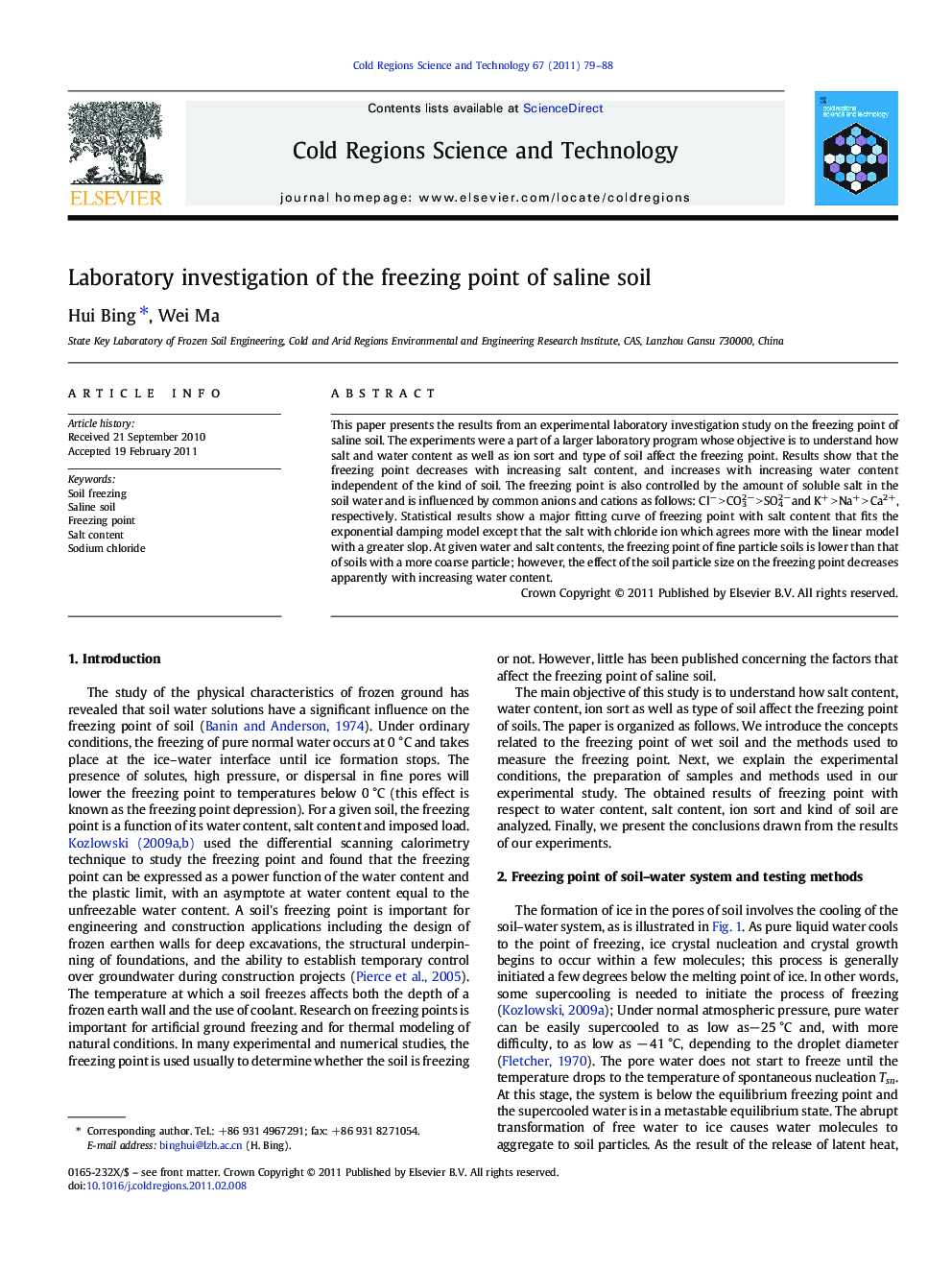| Article ID | Journal | Published Year | Pages | File Type |
|---|---|---|---|---|
| 4676197 | Cold Regions Science and Technology | 2011 | 10 Pages |
This paper presents the results from an experimental laboratory investigation study on the freezing point of saline soil. The experiments were a part of a larger laboratory program whose objective is to understand how salt and water content as well as ion sort and type of soil affect the freezing point. Results show that the freezing point decreases with increasing salt content, and increases with increasing water content independent of the kind of soil. The freezing point is also controlled by the amount of soluble salt in the soil water and is influenced by common anions and cations as follows: Cl− > CO32− > SO42−and K+ > Na+ > Ca2+, respectively. Statistical results show a major fitting curve of freezing point with salt content that fits the exponential damping model except that the salt with chloride ion which agrees more with the linear model with a greater slop. At given water and salt contents, the freezing point of fine particle soils is lower than that of soils with a more coarse particle; however, the effect of the soil particle size on the freezing point decreases apparently with increasing water content.
Research Highlights► The freezing point is controlled by the amount of soluble salt in the soil water. ► The influence of anions on the freezing point is Cl−>CO32−>SO42− while the influence of cations is K+>Na+>Ca2+. ► Statistical results show major fitting curve of freezing point with salt content fit the exponential damping model except that the salt with chloride ion which is more agree with the linear model.
